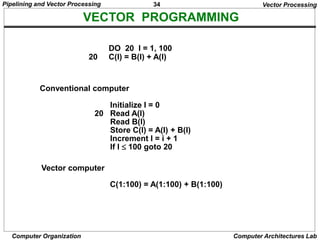This document discusses parallel processing techniques in computer systems including pipelining and vector processing. It covers parallel computer architectures such as SISD, SIMD, MISD, and MIMD systems. The document also describes pipelining techniques including arithmetic pipelining and instruction pipelining. It discusses hazards that can occur in pipelined systems such as structural hazards, data hazards, and control hazards as well as methods to address these hazards including forwarding, interlocking, and instruction scheduling.
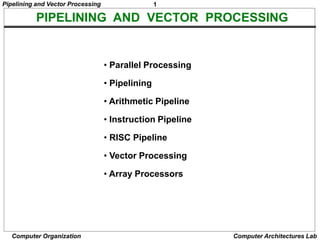
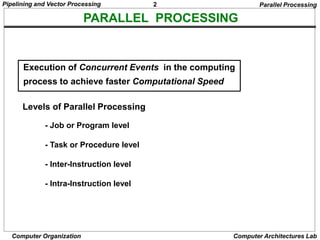
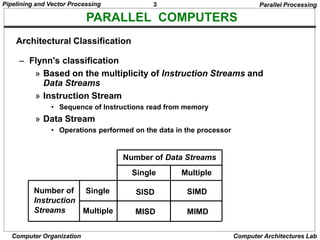
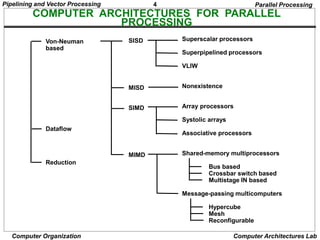
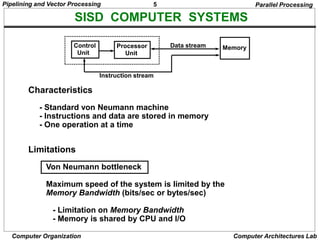
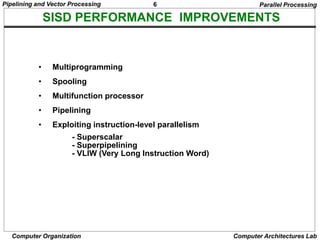

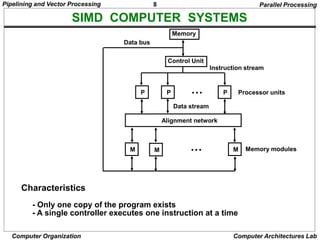
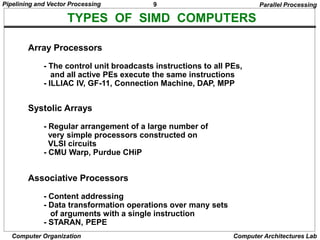
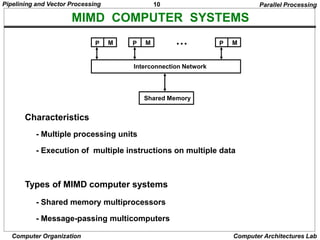


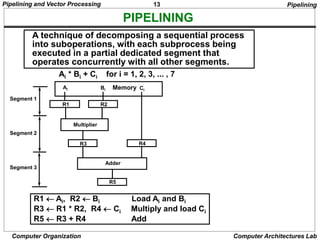
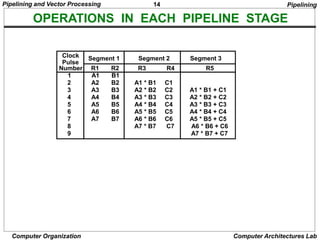
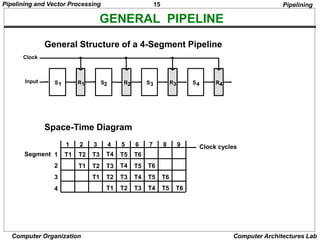
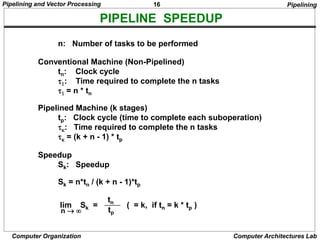
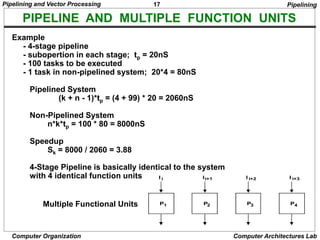
![18
Pipelining and Vector Processing
Computer Organization Computer Architectures Lab
ARITHMETIC PIPELINE
Floating-point adder
[1] Compare the exponents
[2] Align the mantissa
[3] Add/sub the mantissa
[4] Normalize the result
X = A x 2a
Y = B x 2b
R
Compare
exponents
by subtraction
a b
R
Choose exponent
Exponents
R
A B
Align mantissa
Mantissas
Difference
R
Add or subtract
mantissas
R
Normalize
result
R
R
Adjust
exponent
R
Segment 1:
Segment 2:
Segment 3:
Segment 4:
Arithmetic Pipeline](https://image.slidesharecdn.com/parallelprocessing-240209060015-3645a839/85/Parallel-Processing-Techniques-Pipelining-18-320.jpg)

![20
Pipelining and Vector Processing
Computer Organization Computer Architectures Lab
INSTRUCTION CYCLE
Six Phases* in an Instruction Cycle
[1] Fetch an instruction from memory
[2] Decode the instruction
[3] Calculate the effective address of the operand
[4] Fetch the operands from memory
[5] Execute the operation
[6] Store the result in the proper place
* Some instructions skip some phases
* Effective address calculation can be done in
the part of the decoding phase
* Storage of the operation result into a register
is done automatically in the execution phase
==> 4-Stage Pipeline
[1] FI: Fetch an instruction from memory
[2] DA: Decode the instruction and calculate
the effective address of the operand
[3] FO: Fetch the operand
[4] EX: Execute the operation
Instruction Pipeline](https://image.slidesharecdn.com/parallelprocessing-240209060015-3645a839/85/Parallel-Processing-Techniques-Pipelining-20-320.jpg)

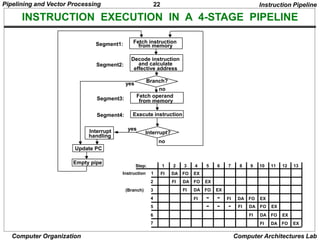
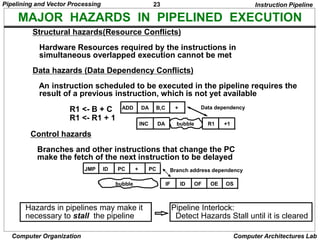







![31
Pipelining and Vector Processing
Computer Organization Computer Architectures Lab
DELAYED LOAD
Three-segment pipeline timing
Pipeline timing with data conflict
clock cycle 1 2 3 4 5 6
Load R1 I A E
Load R2 I A E
Add R1+R2 I A E
Store R3 I A E
Pipeline timing with delayed load
clock cycle 1 2 3 4 5 6 7
Load R1 I A E
Load R2 I A E
NOP I A E
Add R1+R2 I A E
Store R3 I A E
LOAD: R1 M[address 1]
LOAD: R2 M[address 2]
ADD: R3 R1 + R2
STORE: M[address 3] R3
RISC Pipeline
The data dependency is taken
care by the compiler rather
than the hardware](https://image.slidesharecdn.com/parallelprocessing-240209060015-3645a839/85/Parallel-Processing-Techniques-Pipelining-31-320.jpg)


